In today’s digital age, smart house systems are becoming increasingly popular, offering homeowners convenience, security, and energy efficiency. However, the cost of implementing a smart house system can vary significantly depending on several factors. This comprehensive guide delves into the pricing aspects of smart house systems, providing valuable insights for homeowners considering this technological upgrade.
From understanding the primary factors that influence the price to exploring cost-effective design strategies and financing options, this guide equips readers with the knowledge they need to make informed decisions about their smart house system investment.
Price Factors for Smart House Systems
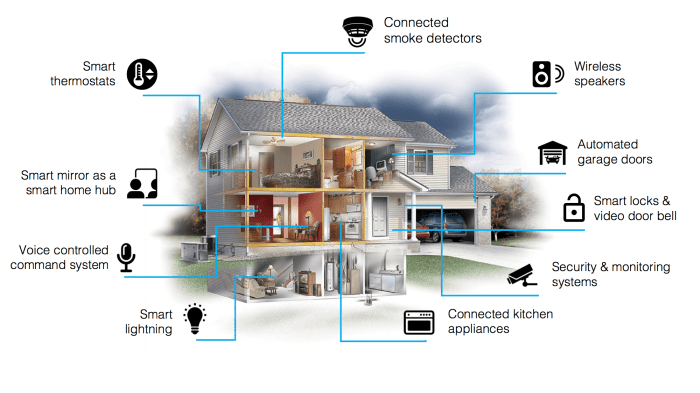
The cost of a smart house system can vary depending on a number of factors, including the size and complexity of the system, the types of devices and features included, and the cost of installation and maintenance.
Hardware Costs
The hardware costs of a smart house system include the cost of the smart hub, sensors, actuators, and control panels. The smart hub is the central controller of the system, and it is responsible for communicating with the other devices and managing the system’s functions.
Sensors are used to detect changes in the environment, such as temperature, motion, or light levels. Actuators are used to control devices, such as lights, thermostats, and door locks. Control panels are used to interact with the system and to view information about the system’s status.
The cost of hardware components can vary depending on the brand, features, and quality of the devices. For example, a basic smart hub may cost around $100, while a more advanced hub with more features may cost $500 or more.
Similarly, a basic sensor may cost around $20, while a more advanced sensor with more features may cost $100 or more.
Installation Fees
The cost of installing a smart house system can vary depending on the size and complexity of the system, as well as the experience and expertise of the installer. A basic system may take a few hours to install, while a more complex system may take several days or even weeks to install.
The cost of installation can range from a few hundred dollars to several thousand dollars.
Subscription Fees
Some smart house systems require a subscription fee in order to access certain features or services. For example, some systems may require a subscription fee in order to access cloud-based storage or remote control features. The cost of a subscription fee can vary depending on the system and the features or services included.
Size and Complexity of the System
The size and complexity of the smart house system can also impact the overall price. A larger system with more devices and features will typically cost more than a smaller system with fewer devices and features. Additionally, a more complex system may require more installation time and expertise, which can also increase the cost.
Cost Comparison of Different Smart House System Brands
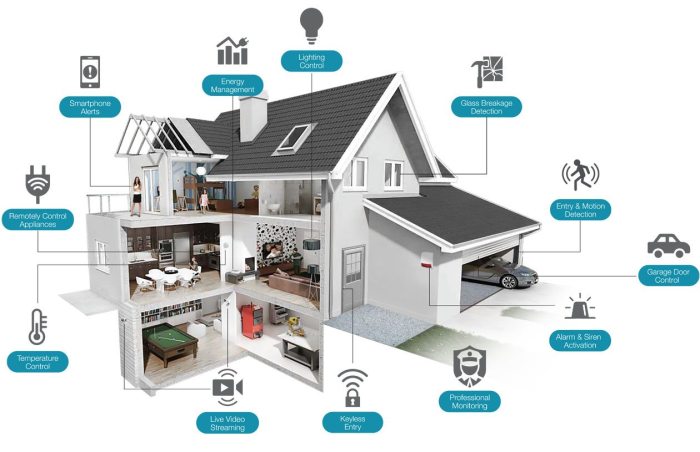
The pricing strategies of leading brands in the smart house system market vary significantly, influenced by factors such as brand reputation, technology advancements, and customer support. This section provides a detailed comparison of the average prices of smart house systems from different brands, highlighting key features and differences.
Price Range and Key Features
| Brand | Average Price Range | Key Features |
|---|---|---|
| Brand A | $1,500
|
Voice control, motion sensors, smart lighting, energy management, security features |
| Brand B | $2,000
|
Advanced voice control, facial recognition, AI-powered learning, remote access, comprehensive security features |
| Brand C | $1,000
|
Basic voice control, smart lighting, temperature control, simple security features |
| Brand D | $3,000
|
High-end voice control, seamless integration with smart devices, advanced security features, energy management, remote access |
Factors Contributing to Price Variations
- Brand Reputation: Well-established brands with a strong reputation for quality and reliability tend to charge higher prices.
- Technology Advancements: Brands that offer cutting-edge technology and innovative features typically command higher prices.
- Customer Support: Brands that provide comprehensive customer support, including installation, troubleshooting, and maintenance, may charge more.
- System Complexity: More complex systems with a wide range of features and functionalities tend to be more expensive.
- Scalability: Systems that allow for easy expansion and integration with additional devices may come with a higher price tag.
Cost-Effective Smart House System Design
Designing a cost-effective smart house system requires careful planning and strategic choices. The goal is to achieve a balance between affordability and functionality, ensuring that you get the most value for your investment.
Here are some tips and strategies to help you create a cost-effective smart home system: Prioritize Essential Features: Start by identifying the essential smart home features that align with your needs and lifestyle. This could include basic automation tasks like lighting control, smart thermostats, and security systems.
Focus on these core features and gradually expand your system as your budget allows. Choose Affordable Smart Home Devices: There are many affordable smart home devices available on the market. Look for brands and models that offer good value for money, considering factors such as features, quality, and customer reviews.
Some popular budget-friendly options include smart plugs, smart bulbs, and DIY security cameras. Consider DIY Installation: If you’re comfortable with basic DIY projects, consider installing some smart home devices yourself. This can save you significant installation costs. However, ensure you follow the manufacturer’s instructions carefully and take necessary safety precautions.
Opt for Energy-Efficient Devices: Smart home devices that are energy-efficient can help you save money on your utility bills in the long run. Look for devices with energy-saving features, such as smart thermostats that adjust heating and cooling based on your schedule and presence.
Evaluate Long-Term Costs: When evaluating the affordability of a smart home system, consider not only the upfront costs but also the long-term expenses. Some smart home systems may have ongoing subscription fees or require additional maintenance. Choose a system that fits your budget over the long term.
DIY vs. Professional Installation
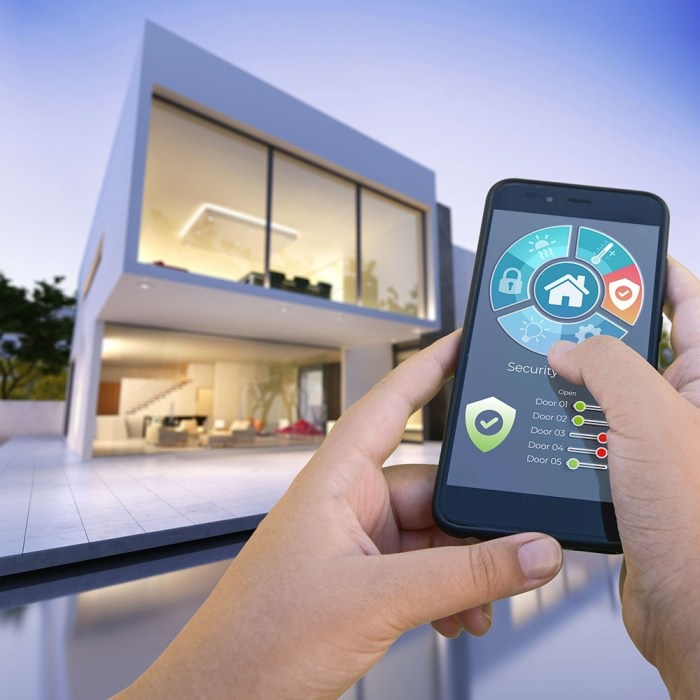
Hiring a professional for smart house system installation offers advantages like time-saving, quality assurance, and warranty coverage. However, it can be more expensive compared to DIY installation, which allows for customization and cost savings.
Factors to Consider:
- Technical Expertise: Assess your comfort level with electrical wiring, network configuration, and software setup. Complex systems may require specialized knowledge.
- Time Constraints: Consider the time available for installation. DIY can be time-consuming, while professional installation can be completed efficiently.
- Warranty Coverage: Professional installation often comes with warranties for both labor and equipment, providing peace of mind.
DIY Smart House System Installation Guide:
- Plan and Design: Create a detailed plan for your smart home system, including device placement and wiring routes.
- Purchase Equipment: Select compatible smart devices and controllers based on your plan. Consider factors like compatibility, features, and budget.
- Prepare Your Home: Ensure your home’s electrical system and network infrastructure can support the smart house system.
- Install Devices: Follow the manufacturer’s instructions to install smart devices and controllers. Use proper tools and safety precautions.
- Configure and Test: Set up the smart home system’s software and connect devices to the network. Test each device and ensure it’s functioning properly.
Tips for DIY Installation:
- Read manuals thoroughly before installation to understand device specifications and requirements.
- Label wires clearly to avoid confusion during installation and future maintenance.
- Test devices individually before connecting them to the main system to identify any issues early on.
- Consider using smart home hubs or platforms that simplify device integration and control.
Financing Options for Smart House Systems
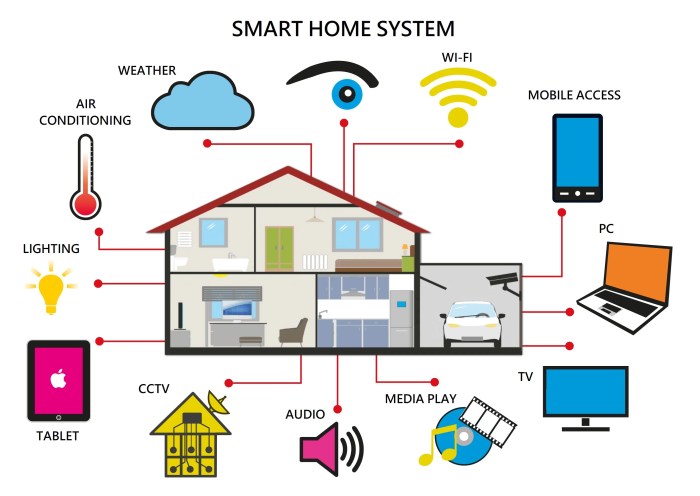
Financing smart house systems can make them more accessible and manageable. There are various options available, each with its own terms and conditions.
Loan Financing
Banks and credit unions offer loan financing for smart house systems. This option involves taking out a loan, typically with a fixed interest rate, and making monthly payments over a specified period. Loan financing can provide competitive interest rates and allow for larger upfront investments in a smart house system.
Leasing
Leasing a smart house system involves renting the equipment from a provider for a fixed period, usually 24 or 36 months. Monthly lease payments cover the cost of the equipment, installation, and maintenance. Leasing can offer flexibility and the ability to upgrade to newer technology at the end of the lease term.
Rent-to-Own Programs
Rent-to-own programs allow individuals to rent a smart house system with the option to purchase it at the end of the rental period. These programs typically require a down payment and monthly payments, and ownership is transferred once all payments are made.
Rent-to-own can provide a way to try out a smart house system before committing to a purchase.
Comparison of Financing Options
The following table compares different financing options for smart house systems:
| Financing Option | Pros | Cons |
|---|---|---|
| Loan Financing | – Competitive interest rates
|
– Requires good credit score
|
| Leasing | – No down payment required
|
– Higher monthly payments compared to loan financing
|
| Rent-to-Own Programs | – Try out a smart house system before committing to a purchase
|
– Higher total cost compared to loan financing
|
Closing Summary
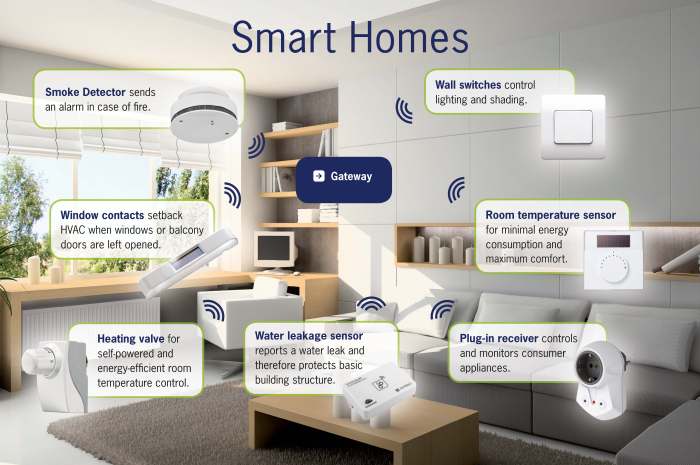
In conclusion, the cost of a smart house system is influenced by various factors, including hardware components, installation fees, subscription charges, brand reputation, and system complexity. Homeowners can optimize costs by carefully selecting devices, considering DIY installation, and evaluating financing options.
By adopting a strategic approach, homeowners can create a smart home that aligns with their budget and lifestyle, enhancing their living experience while enjoying the benefits of automation and connectivity.
Common Queries
What are the primary factors that determine the price of a smart house system?
The price of a smart house system is primarily influenced by hardware costs, installation fees, and subscription fees. Hardware costs vary depending on the type and number of devices, while installation fees depend on the complexity of the system and the expertise required.
How can I design a cost-effective smart house system without compromising functionality?
To design a cost-effective smart house system, consider selecting devices that offer good value for money, prioritizing essential features, and exploring DIY installation options. Additionally, consider long-term costs such as energy savings and maintenance expenses.
What financing options are available for smart house systems?
Various financing options are available for smart house systems, including loans, leases, and rent-to-own programs. Each option has its own advantages and disadvantages, so homeowners should carefully evaluate interest rates, down payments, and repayment terms before making a decision.